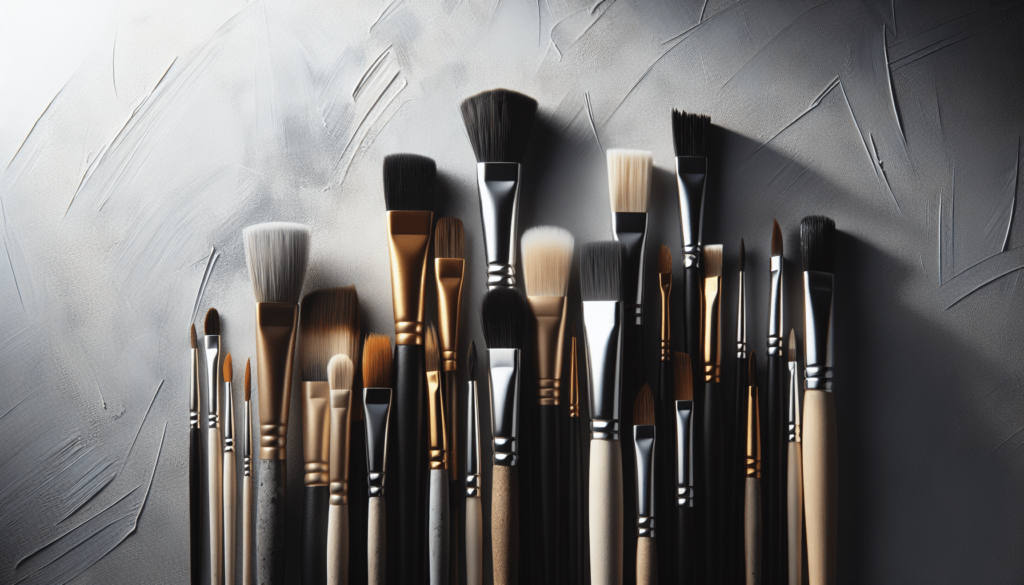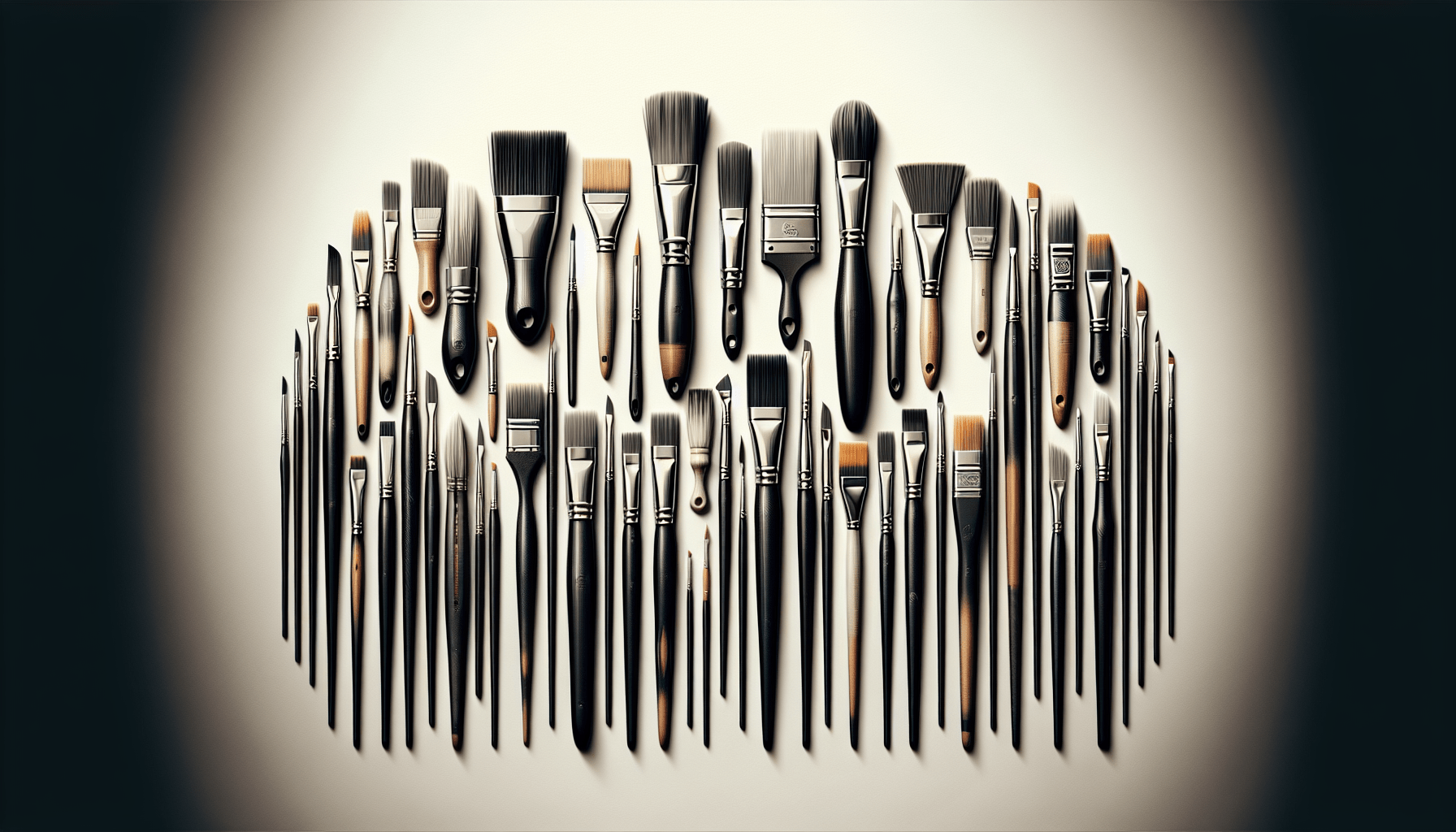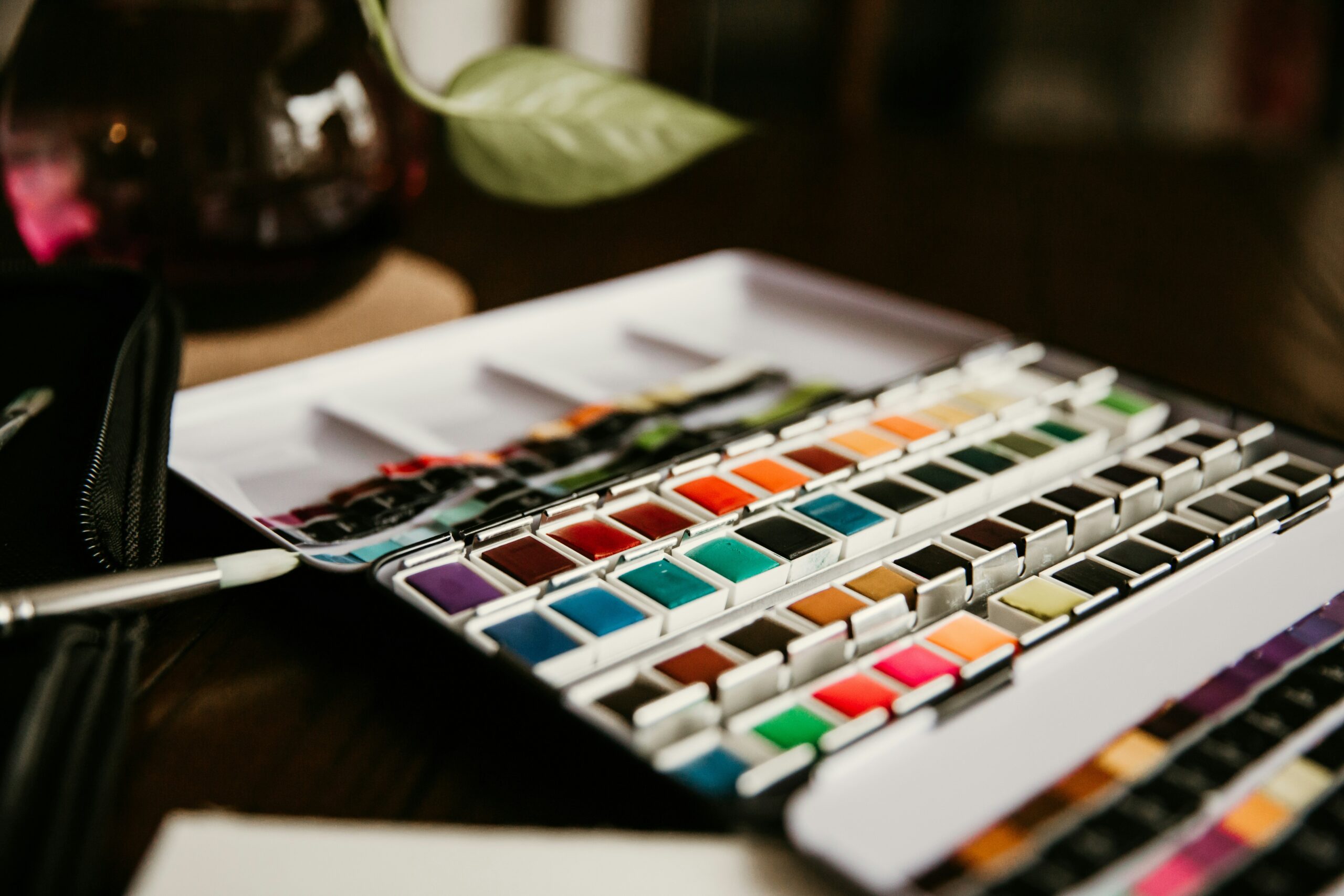Navigating the vast world of art supplies can be a challenging task; the subtle differences in tools can significantly determine the outcome of your art piece. Let’s focus on one: the synthetic paintbrush. This piece serves to navigate you through the nitty-gritty of a synthetic paintbrush — a fundamental tool for any artist seeking precision in paint application and longevity in their equipment. Grasping its distinctive features and understanding the merit in utilizing this particular brush type over the others can dramatically enhance your painting experience.
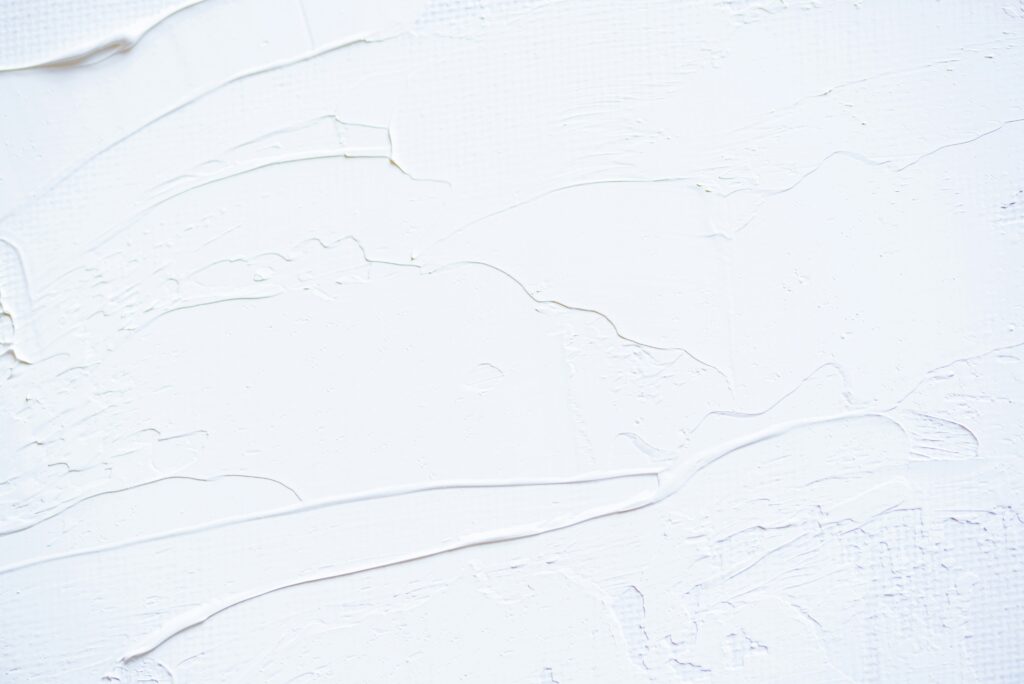
Definition of a Synthetic Paint Brush
A synthetic paint brush is a paint brush that is specifically made from synthetic materials, often nylon or polyester fibers. These materials are tailored to mimic the properties of natural hair brushes while being much more affordable and durable. The synthetic fibers are more resistant to damage from solvents and paints, making them a popular choice for artists and painters of all levels.
Materials Used
The materials used in making a synthetic paint brush generally include nylon and polyester. These synthetic fibers are designed to mimic the structure of natural hair, allowing for a smooth and even distribution of paint. Some synthetic brushes also use a blend of nylon and polyester to achieve specific characteristics, such as a stiffer brush stroke or greater paint-holding capacity.
Advantages
There are several advantages to using synthetic paint brushes. These include their durability, affordability, and versatility. They can also maintain their shape well over time and are less prone to shedding compared to natural brushes. They don’t absorb water like a natural brush, making them a great choice for water-based paints.
Disadvantages
While synthetic brushes have their benefits, they also come with some disadvantages. For one, they may not carry paint and create strokes as smoothly as natural brushes, which can affect the overall paint application. Additionally, synthetic brushes may not last as long under heavy or prolonged use, requiring replacement more frequently.
Types of Synthetic Paint Brushes
Nylon Brushes
Nylon synthetic brushes are known for their softness and flexibility. They have good spring and resilience, meaning they snap back into shape well. They are excellent for watercolor and acrylic painting due to their ability to hold and evenly distribute paint.
Polyester Brushes
Polyester synthetic brushes are generally stiffer than nylon brushes. They are tougher and possess a high resistance to wear and tear, making them ideal for heavier and thicker paints. They are also less prone to fraying and shedding, maintaining a sharp shape much longer.
Blend Brushes
There are also blend brushes that combine both nylon and polyester fibers. These brushes offer a balance between the softness and flexibility of nylon, and the durability of polyester. They are versatile brushes suitable for a variety of painting projects, from acrylic to oil painting.
Choosing the Right Synthetic Paint Brush
Consider the Project
The choice of a synthetic paint brush often depends on the project at hand. You must consider what type of paint you will be using and what kind of techniques you plan to employ. For example, if you’re using thick paint, a stiffer brush would be optimal.
Brush Size and Shape
The size and shape of a brush greatly influence the type of stroke and detail you can achieve. Flat brushes are ideal for filling in large areas, while round brushes are suitable for details and fine lines.
Bristle Stiffness
The stiffness of the bristles can affect the texture of your painting. Stiffer bristles are great for creating textural effects while softer bristles allow for smoother strokes.
Handle Design
The design of the handle should offer a comfortable grip and good control. A poorly designed handle could cause fatigue during prolonged use and affect the quality of your work.
How to Care for Synthetic Paint Brushes
Cleaning Techniques
After using your synthetic paint brushes, it’s essential to clean them properly. Rinse under running water and use a mild soap to remove all traces of paint. For stubborn paint, a brush cleaner may be used.
Storing and Drying
Once cleaned, brushes should be reshaped and left to dry in a horizontal position. This helps to prevent any distortion of the bristles while drying. Avoid storing brushes in a cup or jar as this can misshape the bristles.
Maintenance Tips
Using a brush conditioner can help prolong the life of your synthetic brushes, keeping them soft and flexible. It’s also important to avoid letting paint dry on your brush as this can damage the bristles over time.
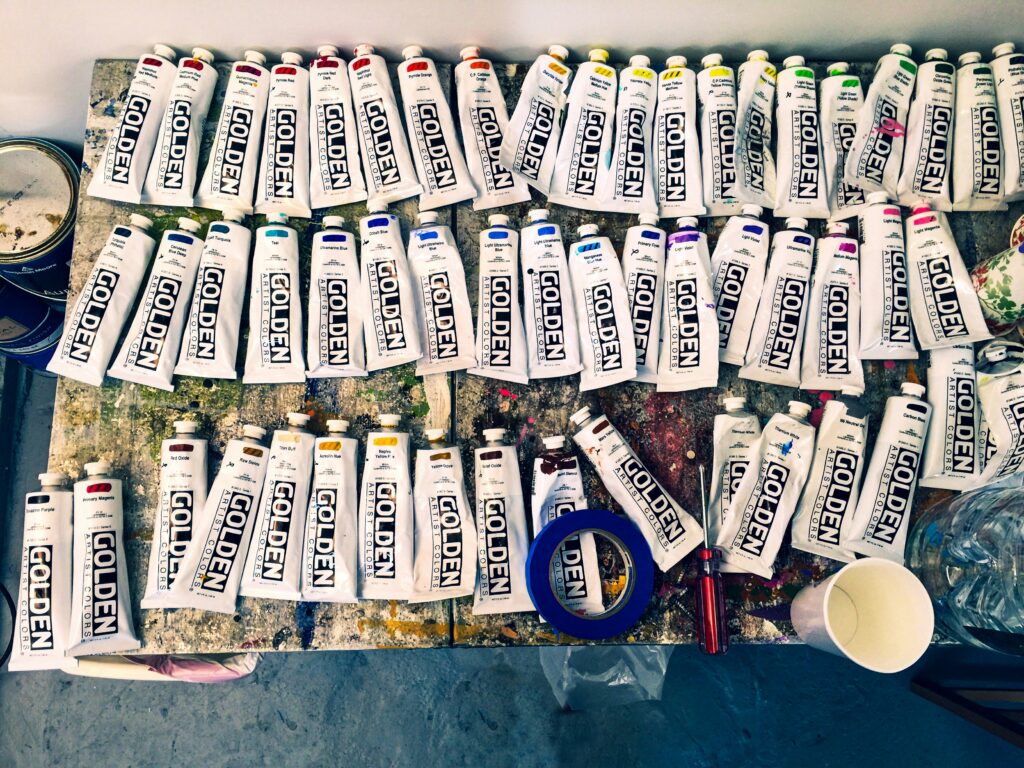
Applications of Synthetic Paint Brushes
Acrylic Painting
With their ability to not absorb water, synthetic brushes are great for acrylic painting. They are capable of creating a variety of effects, from flat washes to detailed work.
Watercolor Painting
Nylon synthetic brushes work wonders for watercolor painting due to their softness and flexibility. They hold water and pigment well, making it easier to carry out washes and wet-on-wet techniques.
Oil Painting
Polyester and blend brushes work well for oil painting as they can handle the weight of the thick paint and are resistant to the solvents used in oil painting.
Comparing Synthetic and Natural Paint Brushes
Brush Performance
Although synthetic brushes have come a long way in imitating the performance of natural brushes, some differences remain. Natural brushes often provide a smoother paint application, while synthetic brushes may give a slight edge in durability and cost.
Durability
Synthetic brushes have a slight edge in durability as they are less prone to damage from paints and solvents. Natural brushes often require more meticulous care to maintain their quality over time.
Price
Synthetic brushes tend to be more budget-friendly than natural brushes. This makes them a favorite among beginners, students, and artists who are budget-conscious.

Popular Brands of Synthetic Paint Brushes
Royal & Langnickel
Royal & Langnickel is well-known for their range of high-quality yet affordable synthetic brushes. They offer a wide selection for varying techniques and mediums.
Winsor & Newton
Winsor & Newton is another reputable brand that offers synthetic brushes. They are particularly praised for their brushes that are designed to mimic the performance of natural sable brushes.
Loew Cornell
Loew Cornell is known for their durable and well-crafted synthetic brushes. Popular among artists of all levels, they provide a good balance between quality and price.
Tips for Using Synthetic Paint Brushes
Prepping the Brush
Before using your synthetic brush, prep it by washing it with mild soap and water. This removes any manufacturing residue that might affect your painting.
Techniques for Different Effects
Experiment with different techniques to achieve a variety of effects. Adjusting your grip, the angle of your brush, and the pressure you apply can drastically change the outcome.
Cleaning after Each Use
Remember to clean your brush thoroughly after each use. This prevents any paint from drying and damaging the bristles.
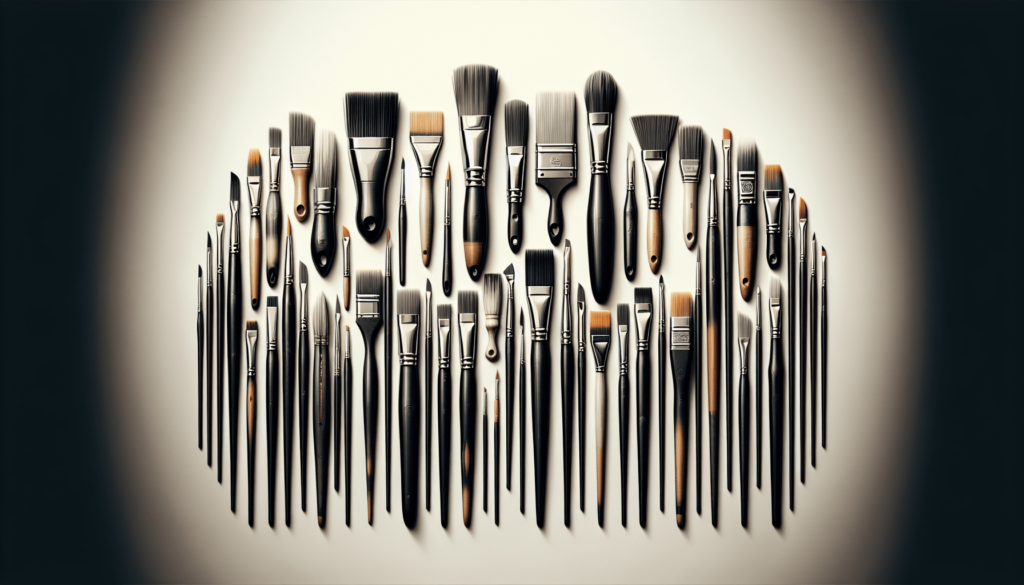
Common Mistakes to Avoid
Using the Wrong Brush for the Medium
Each brush is designed for specific mediums, and using the wrong brush can lead to poor results. Ensure that you match the brush with the paint you are using.
Neglecting Proper Cleaning
Not cleaning your brushes properly can lead to a buildup of old paint, potentially damaging the fibers and rendering the brush useless.
Not Using the Appropriate Brush stroking
Using the wrong brush stroke can affect the quality of your work. Long, steady strokes are great for wide areas, while shorter strokes are more suited for details and texture.
Conclusion
Benefits of Synthetic Paint Brushes
Synthetic paint brushes provide versatility, durability, and affordability, making them a reliable choice whether you’re a beginner or an experienced artist. Their quality has vastly improved over the years, closely mimicking the quality of natural brushes.
Versatility and Accessibility
The versatility of synthetic brushes comes from their wide range of sizes, shapes, and stiffness. This makes them accessible for any kind of painting project, whether it involves thin watercolors or thick oil paints.
Final Thoughts
While synthetic brushes may not perfectly replicate the performance of their natural counterparts, their ability to provide reliable and consistent results makes them an important tool for any artist’s kit. In considering the project, brush characteristics, and proper care, you can maximize the potential of your synthetic brushes in creating beautiful, intricate artworks.
